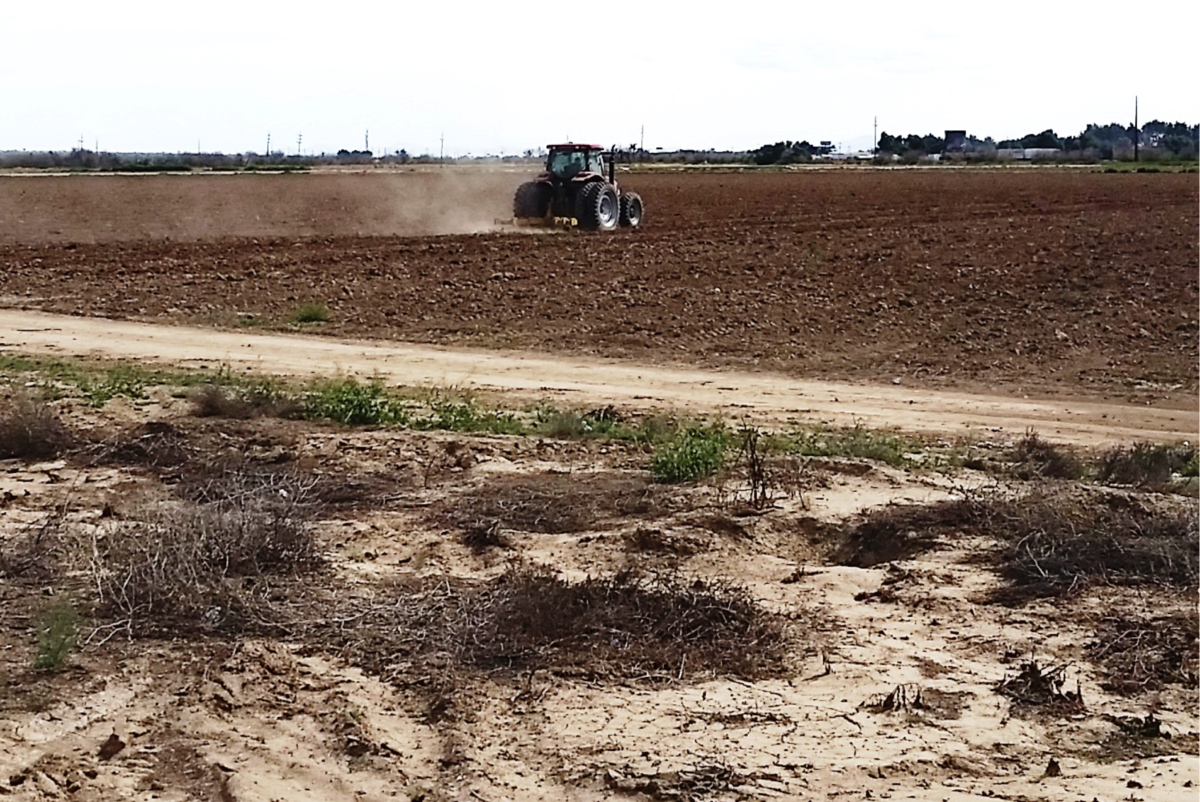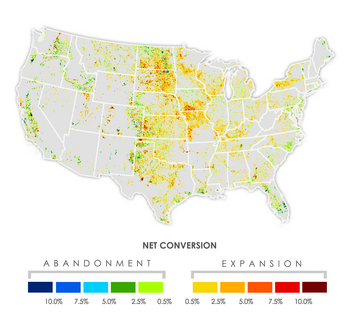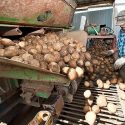Plowing prairies for grains: Biofuel crops replace grasslands nationwide

Spring cultivation of an irrigated field in Pinal County, Arizona. As farmers across the nation expand cropland area to meet demand for corn and other crops, they are often forced to till and plant increasingly marginal land.
Photo: Tyler Lark
Clearing grasslands to make way for biofuels may seem counterproductive, but University of Wisconsin–Madison researchers show in a study today (April 2, 2015) that crops, including the corn and soy commonly used for biofuels, expanded onto 7 million acres of new land in the U.S. over a recent four-year period, replacing millions of acres of grasslands.
The study — from UW–Madison graduate student Tyler Lark, geography Professor Holly Gibbs, and postdoctoral researcher Meghan Salmon — is published in the journal Environmental Research Letters and addresses the debate over whether the recent boom in demand for common biofuel crops has led to the carbon-emitting conversion of natural areas. It also reveals loopholes in U.S. policies that may contribute to these unintended consequences.
“We realized there was remarkably limited information about how croplands have expanded across the United States in recent years,” says Lark, the lead author of the study. “Our results are surprising because they show large-scale conversion of new landscapes, which most people didn’t expect.”
Nationwide, over 7.3 million acres of land — mostly grasslands — were converted to crop production 2008-2012, with clear “hotspots” of change located across the U.S.
The conversion to corn and soy alone, the researchers say, could have emitted as much carbon dioxide into the atmosphere as 34 coal-fired power plants operating for one year — the equivalent of 28 million more cars on the road.
The study is the first comprehensive analysis of land-use change across the U.S. between 2008 and 2012, in the “critical time period” following passage of the federal Renewable Fuel Standard (RFS), and during a “new era” of agriculture and biofuel demand, Lark and Gibbs say. The results may aid policymakers as Congress debates whether to reform or repeal parts of the RFS, which requires blending of gasoline with biofuels that are supposed to be grown only on pre-existing cropland, in order to minimize land-use change and its associated greenhouse gas emissions.
Lark recently visited Washington, D.C., to present the findings to the Environmental Protection Agency and the White House Office of Management and Budget, which share responsibility for rule-making and review of the RFS.
For instance, the study found that 3.5 million acres of corn and soy grown during this time period was produced on new, rather than pre-existing, cropland, rendering it potentially ineligible for renewable fuel production under the RFS. However, this went undetected due to limitations in current federal monitoring, which captures only national-level, aggregate land-use change rather than the high-resolution changes found in the study.
The study also showed that expanding the geographic scope of another policy, the Sodsaver provision of the 2014 Farm Bill, could better prevent widespread tilling of new soils. This policy reduces federal subsidies to farmers who grow on previously uncultivated land, but it applies in only six Northern Plains states. The researchers say the findings suggest a nationwide Sodsaver is needed to protect remaining native ecosystems, since roughly two-thirds of new cropland conversion occurred outside of these states.
Corn was the predominant first crop planted upon conversion to cropland, grown directly on 1.94 million acres of newly converted land across the country from 2008 to 2012.
Using high-resolution satellite imagery data collected over the last 40 years by the U.S. Department of Agriculture and the U.S. Geological Survey, the researchers identified where land had been converted to cropland, to what extent conversion had occurred, and the nature of the conversion — for instance, whether wetlands were converted for soy, or grasslands were turned into cornfields.
Grasslands are home to a diversity of species and store an abundance of carbon in their soils; yet, the researchers found nearly 80 percent of cropland expansion replaced grasslands, among them 1.6 million acres of undisturbed natural grassland equivalent in area to the state of Delaware.
Though not included in the study, the researchers estimate this conversion emitted as much carbon dioxide as 23 coal-fired power plants running for a year.
In fact, nearly a quarter of all land converted for crop production came from these long-standing prairies and ranges, much of it within the Central Plains from North Dakota to Texas. “It mimics the extreme land-use change that led up to the Dust Bowl in the 1930s,” Lark says.
Because most new cropland was planted to corn that may ultimately fill our gas tanks, he added, “we could be, in a sense, plowing up prairies with each mile we drive.”
The researchers also found that most new croplands were on marginal lands not well suited for agriculture and often prone to heightened risks of erosion, flooding and drought.
“There could be severe environmental consequences for bringing this land into crop production,” Lark says.
Gibbs, also a professor in the UW–Madison Nelson Institute Center for Sustainability and the Global Environment, believes the findings present an opportunity to address the shortcomings in existing U.S. policies while also facilitating a more climate-friendly approach to biofuels.
“The good news is that our existing policies could be refined to help improve conservation,” she says. “By closing the gaps in the existing Sodsaver and RFS, we could better protect our nation’s grasslands and prairies.”
Additional facts
- North and South Dakota experienced the greatest amount of new crop cultivation, followed by Southern Iowa and Northern Missouri, and the Western parts of Kansas, Oklahoma, and the Texas panhandle.
- While cropland expanded onto new lands, 4.4 million acres of former cropland was abandoned or otherwise removed from production, most of which was enrolled into the Conservation Reserve Program.
- Looking at land-level rather than net changes to land use amounted to a fourfold increase in the amount of conversion identified.
- Over 40 percent of the increases in corn and other crop acreages were met by bringing new land into production, rather than crop switching.
Tags: agriculture, energy, research





